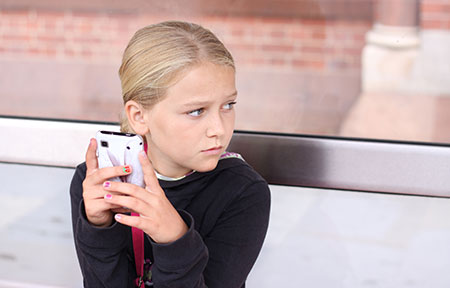Nov 26, 2017

Kidnapping, rape, child pornography, murder; these are the stories we see, all too frequently, involving our children. Even more alarming is that our kids’ smartphones, and more specifically the apps on their phones, are the gateway through which child predators get into their lives. The best way to protect your children is to arm yourself with information, so let’s take a look at some of the most dangerous apps for kids.
kik
One of the most dangerous apps for teens, and one continually making headlines, is kik. Messaging app kik allows your kids to send messages that you can’t see, and verifying the identity of both sender and receiver is very difficult. A popular app for kids under age 18, kik’s also very popular with sexual predators; this app should be deleted from your child’s phone.
Snapchat
Many adults are already using Snapchat, so you may already know the basics of using the app. Snapchat allows you to send a photo or video from your phone and determine how long the person on the other end can see the image until it self-destructs. What you may not realize is that teen users are bypassing the “self-destruct” aspect by capturing screenshots of interactions. This can be potentially devastating, as well as fuel for cyberbullying, should your teen share intimate information about themselves with friends. For this reason alone, Snapchat makes our list of the most dangerous apps for kids.
Ask.fm
A social networking site in question and answer format, Ask.fm caused enough problems in the U.K. for former Prime Minister, David Cameron, to urge parents not to let their children use the app. Seemingly innocuous, Ask.fm is being used by teens to abuse and bully others, made easier by the fact that there is no third party moderation of the content posted. Without adequate privacy settings, the absence of content moderations, and the ability to be used anonymously, Ask.fm has been linked to teen suicides around the globe.
Whisper
Another anonymous messaging app, Whisper allows users to connect in groups based upon their interests and location, and is used for “telling secrets”. While the app is rated 17+, the application allows 15-17 year olds to use the platform. Posts are “whispers” and users can search under topics and then reply publicly or open a personal chat. What makes Whisper one of the most dangerous apps for kids is that the anonymous aspect of the platform, paired with the location-based grouping, can easily connect your child with a predator.
Blendr
On Blendr, kids can message, exchange photos and videos, and rate the “hotness” of other users, based upon GPS location — this, alone, poses an obvious issue with teens and tweens who are basing their identity and self-esteem on the feedback they receive from their peers. There is no age restriction, so your children can potentially be having exchanges with adults through this app.
WhatsApp
WhatsApp is a messaging service that lets users exchange unlimited text, audio, photo and video messages over the Internet. What makes WhatsApp one of the most dangerous apps for teens is that interactions and exchanges are on a platform other than their phone, meaning teens can have messaging interactions and exchanges that are not saved on their phones (and reviewed by parents). WhatsApp appeals to teens for the privacy and freedom to exchange any messages they want, with whomever they want.
While you may consider yourself a pro at navigating Facebook, Twitter, and even Instagram, these are relatively safe places for your children to spend time, as attested by this list of dangerous apps for kids. Again, arm yourself with information to stay “in-the-know” with the apps your child may be drawn to, but can very well be harmful to them. Install a parental control software that includes a report when new apps are downloaded by anyone in your family.